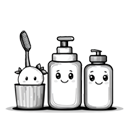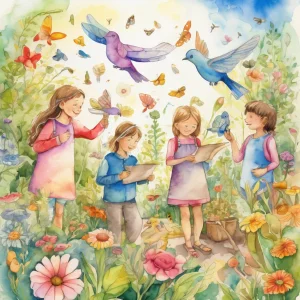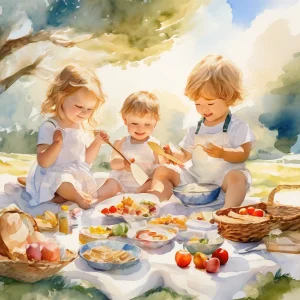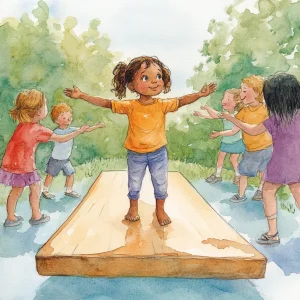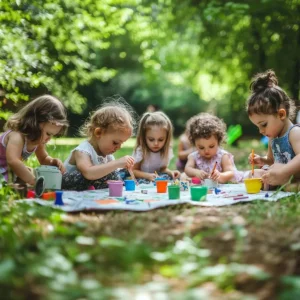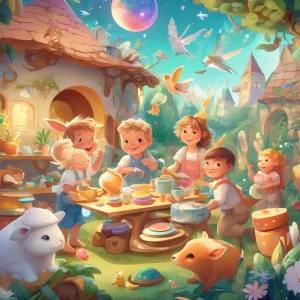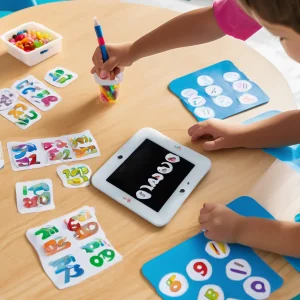Activity
Similar Activities
Enchanted Clay Sculpture Storytelling Forest
Children’s Age: 6–10 years
Activity Duration: 15 – 30 minutes
Engage children aged 6 to 10 in the Clay Sculpture Storytelling activity to foster cultural understanding, play skills, and self-regulation. Gather air-dry or sculpting clay, a tab…
Activity Duration: 15 – 30 minutes
Enchanted Forest: Nature's Treasure Hunt Adventure
Children’s Age: 11–15 years
Activity Duration: 30 – 45 minutes
Explore the wonders of the outdoors with "Nature's Treasure Hunt," a fun and educational activity for children. This outdoor adventure boosts play skills, academic knowledge, and s…
Activity Duration: 30 – 45 minutes
Journey of Rhythms: Dance Around the World
Children’s Age: 2–3 years
Activity Duration: 15 minutes
The "Cultural Dance Party" activity is tailored for children aged 24 to 36 months, offering a fun and interactive dance experience. Through movement, music, and rhythm, kids enhanc…
Activity Duration: 15 minutes
Picnic Adventure: Pretend Cooking Play for Toddlers
Children’s Age: 2–3 years
Activity Duration: 10 – 30 minutes
An imaginative activity where children (ages 2-3) engage in pretend cooking during a picnic adventure.
Activity Duration: 10 – 30 minutes
Balance Beam Adventure: Enhancing Coordination and Focus
Children’s Age: 2–12 years
Activity Duration: 5 minutes
This fun activity called "Balancing Act Fun" is perfect for kids aged 2 to 6. It helps improve coordination, balance, and self-regulation. You'll need a flat surface, a stable boar…
Activity Duration: 5 minutes
Outdoor Tea Party and Fix-it Fun for Toddlers
Children’s Age: 2–4 years
Activity Duration: 10 – 25 minutes
Let's create a fun Outdoor Tea Party and Fix-it Station for kids aged 1 to 3. Set up a table and chairs, play tea set, pretend tools, household items for fixing, a picnic blanket, …
Activity Duration: 10 – 25 minutes
Cultural Photo Exploration: World Wonders Journey
Children’s Age: 6–10 years
Activity Duration: 20 minutes
Embark on the "Cultural Photo Exploration" activity to boost children's play skills, cultural awareness, and academic development through an outdoor photography journey. Choose a d…
Activity Duration: 20 minutes
Enchanted Reflections: Peek-a-Boo Mirror Play
Children’s Age: 6 months – 1 year
Activity Duration: 5 minutes
"Peek-a-Boo Mirror Play" is a wonderful activity designed for infants aged 6 to 12 months, focusing on language development and self-awareness. With a handheld mirror and a soft bl…
Activity Duration: 5 minutes
Holiday Emotions Puzzle: Festive Empathy Exploration
Children’s Age: 4–6 years
Activity Duration: 10 – 15 minutes
The "Holiday Emotions Puzzle" activity is designed for children aged 48 to 72 months to develop self-care skills, empathy, and language through logical games and puzzles. Children …
Activity Duration: 10 – 15 minutes
Whispers of Nature: Eco-Puzzle Challenge
Children’s Age: 8–12 years
Activity Duration: 20 minutes
The "Eco-Puzzle Challenge" activity is a fun and educational way to promote empathy, play skills, and ecological awareness in children aged 8 to 12. Children work in small teams to…
Activity Duration: 20 minutes
Nature's Balance Trail: A Tale of Textures and Tales
Children’s Age: 1.5–2 years
Activity Duration: 5 minutes
Nature's Balance Trail is an engaging activity tailored for children aged 18 to 24 months to discover nature, enhance balance, and boost early literacy skills through storytelling.…
Activity Duration: 5 minutes
Sensory Music-Making Session: Sound Story Drawing Adventure
Children’s Age: 2–2.5 years
Activity Duration: 5 – 20 minutes
A sensory music-making activity using household items to enhance sensory development and introduce children to the world of music.
Activity Duration: 5 – 20 minutes




